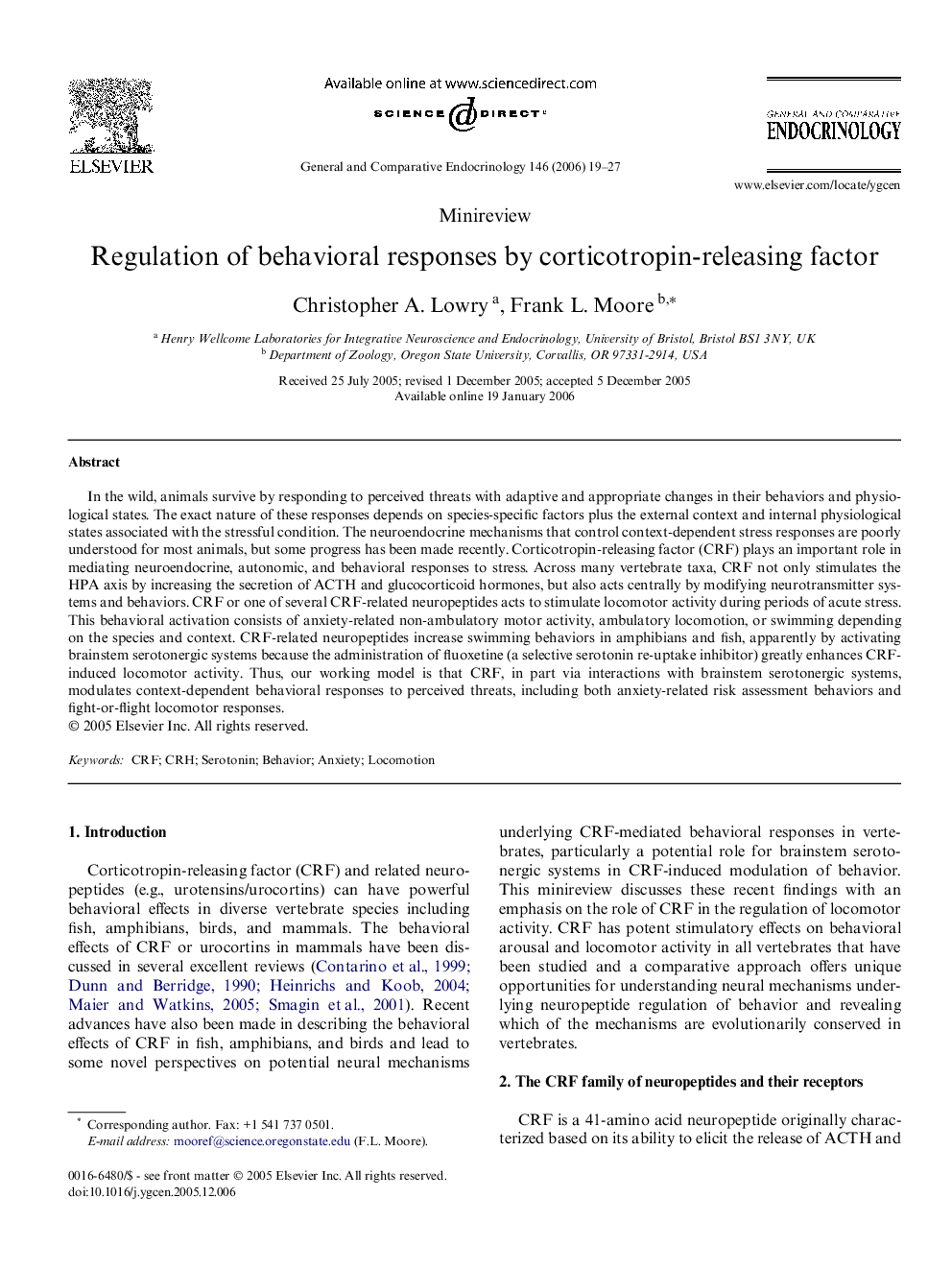| Article ID | Journal | Published Year | Pages | File Type |
|---|---|---|---|---|
| 2802465 | General and Comparative Endocrinology | 2006 | 9 Pages |
In the wild, animals survive by responding to perceived threats with adaptive and appropriate changes in their behaviors and physiological states. The exact nature of these responses depends on species-specific factors plus the external context and internal physiological states associated with the stressful condition. The neuroendocrine mechanisms that control context-dependent stress responses are poorly understood for most animals, but some progress has been made recently. Corticotropin-releasing factor (CRF) plays an important role in mediating neuroendocrine, autonomic, and behavioral responses to stress. Across many vertebrate taxa, CRF not only stimulates the HPA axis by increasing the secretion of ACTH and glucocorticoid hormones, but also acts centrally by modifying neurotransmitter systems and behaviors. CRF or one of several CRF-related neuropeptides acts to stimulate locomotor activity during periods of acute stress. This behavioral activation consists of anxiety-related non-ambulatory motor activity, ambulatory locomotion, or swimming depending on the species and context. CRF-related neuropeptides increase swimming behaviors in amphibians and fish, apparently by activating brainstem serotonergic systems because the administration of fluoxetine (a selective serotonin re-uptake inhibitor) greatly enhances CRF-induced locomotor activity. Thus, our working model is that CRF, in part via interactions with brainstem serotonergic systems, modulates context-dependent behavioral responses to perceived threats, including both anxiety-related risk assessment behaviors and fight-or-flight locomotor responses.
